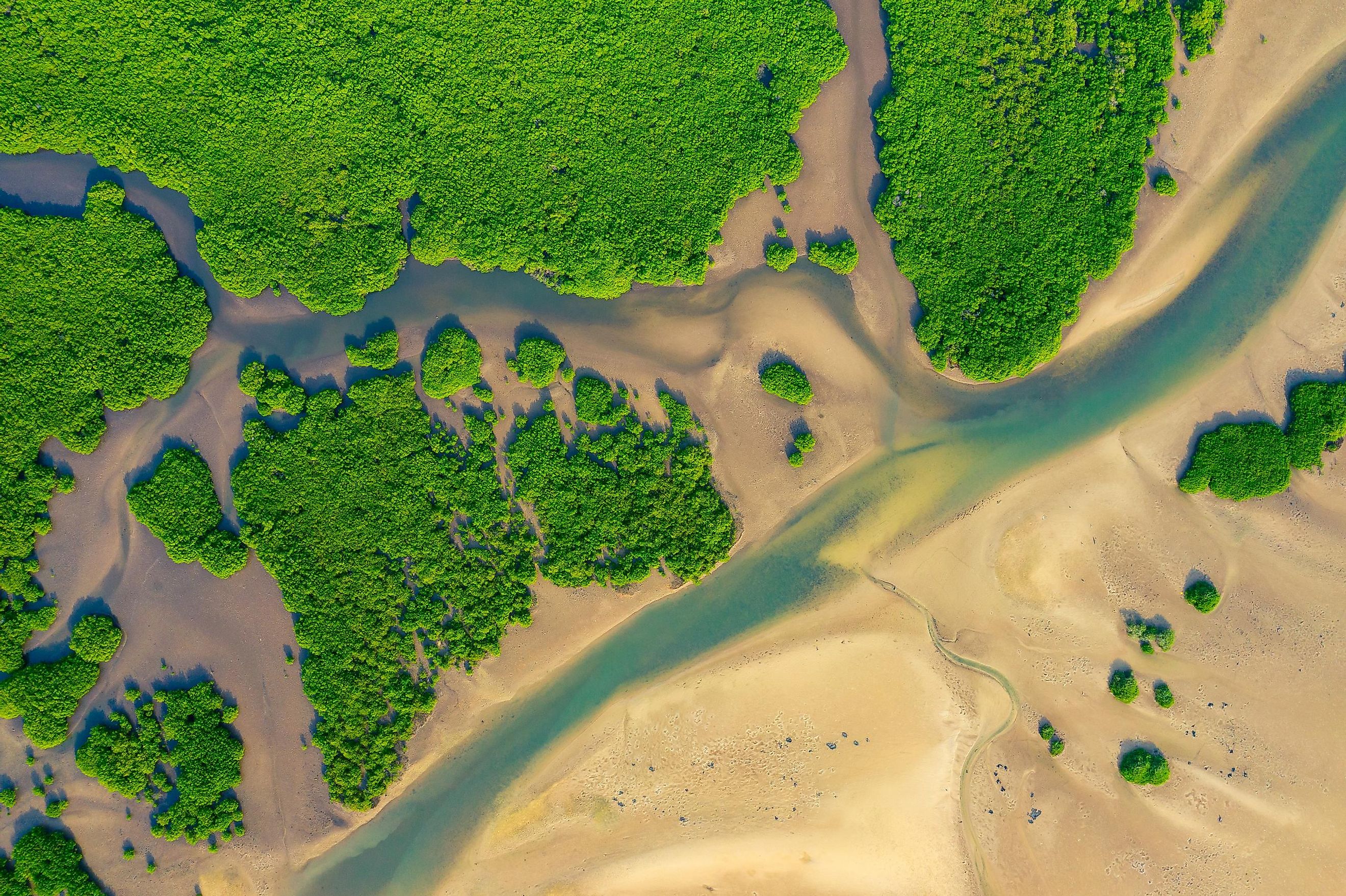
Amazon Delta
The enigmatic Amazon Delta, often overshadowed by the Amazon Rainforest, is a thing of sheer beauty, a natural marvel. This region holds immense ecological significance and lies at the point where the massive Amazon River meets the Atlantic. It is home to a remarkable ecosystem that teems with unique life and boasts geological wonders essential to maintaining the health of our planet.
Also known as the ‘delta do Amazonas,’ this river delta is formed by the confluence of the Amazon and Tocantins rivers. It is located in northern South America in the Brazilian states of Amapa and Para and is one of the most important wetlands in the world. It covers a vast area and extends into Suriname and French Guiana. In addition to muddy wetlands, the delta is a labyrinth of slow-moving waterways, river channels, and islands that provide wildlife habitats.
What Makes The Amazon Delta Unique?
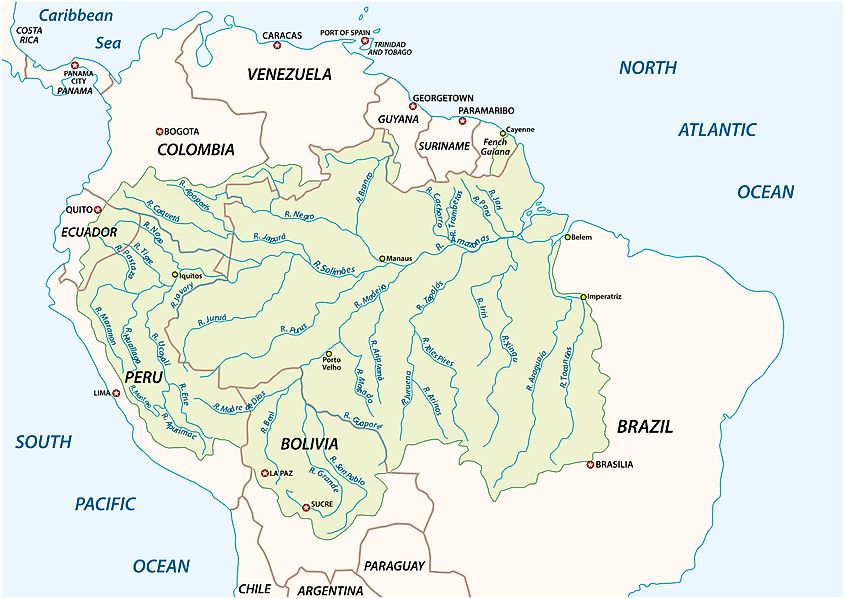
The Amazon Delta is unlike other deltas and doesn’t fit the traditional description. Typically, a triangular delta forms as a river deposits its sediments before running into the sea. The Amazon River carries a huge volume of sediments, to the extent that the Atlantic’s wave and tidal energy is insufficient in carrying it out to the deep ocean waters. As a result, the Amazon Delta does not have the classic delta shape, and the Amazon River technically does not have a true delta.
Amazon Delta Climate
The delta has a tropical climate with high, humid temperatures and a lot of rain. The region is known to experience a very wet season every year with frequent flooding and a dry season during which the water recedes. These climate variations help shape the environment for the plants and animals that live in it.
Islands In The Amazon Delta
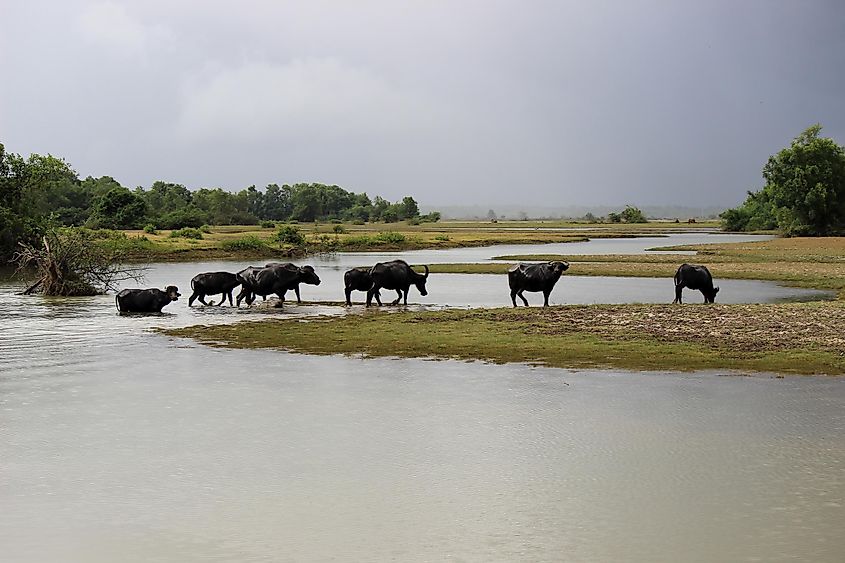
There are various islands within the Amazon Delta landscape. These islands are both large and small and include Marajo Island, the largest fluvial island in the world. Marajo is also the largest of the islands in the Marajo Archipelago and is separated from land by a host of rivers, Marajo Bay and the Atlantic. Overall, the island is the second largest in South America and 35th on the list of largest islands in the world.
In modern times, Marajo Island is well known for its water buffalo population and the pororoca tidal bore that pushes against the water currents in the surrounding rivers to reverse their flow.
Amazon Delta Marine Life
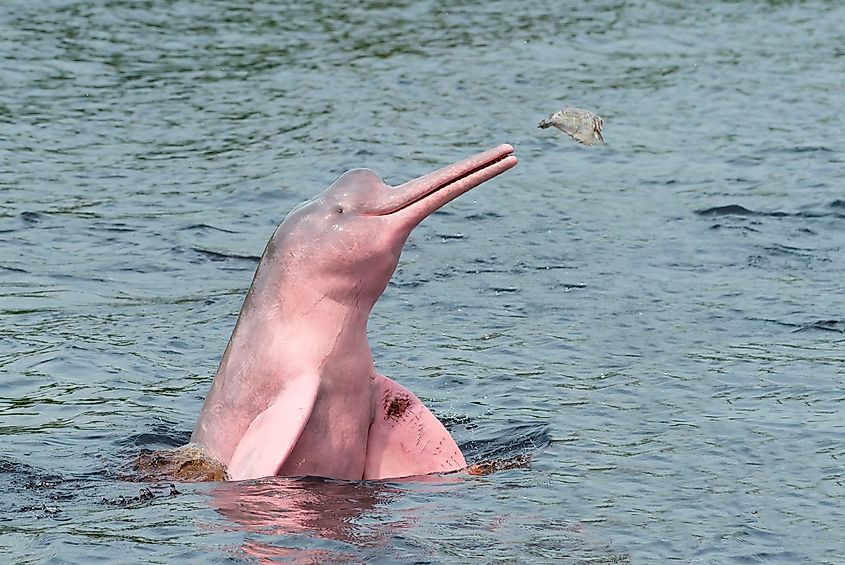
Pink river dolphins and, by contrast, fearsome piranhas both inhabit the waters of the Amazon Delta. The landscape and water also provide a home for stunning birds, intriguing reptiles, and a range of aquatic creatures. Moreover, the Amazon River basin, and by default the Amazon Rainforest, boasts giant rodents in the form of capybaras, gorgeous jaguars, giant otters, giant anteaters, black caimans, three-toed sloths, and keel-billed toucans.
Brief History Of The Amazon Delta
For centuries, indigenous tribes called the Amazon Delta region home and used its resources to thrive. When European explorers and colonizers inevitably arrived during the 16th century, the area’s history reached a turning point. The delta became a central hub for trade and doubled as the gateway to the Amazon Rainforest. As time passed, the delta region oversaw many economic trades and activities, including rubber production and, more recently, eco-tourism.
Human Settlements Around The Amazon Delta
The human settlements along the coasts of various Amazon countries are a mix of historical and modern. The historical settlements sit along the coastlines of Guyana and Suriname, while modern societies cluster together in cities and towns across the Amazon. In some settlements, the quality of life is impacted by the uneven distribution of infrastructure and basic services. Additionally, the entire Amazon region continues to face environmental degradation, such as deforestation and severe pollution. This threatens the sustainability of settlements and the livelihoods of people in the area.
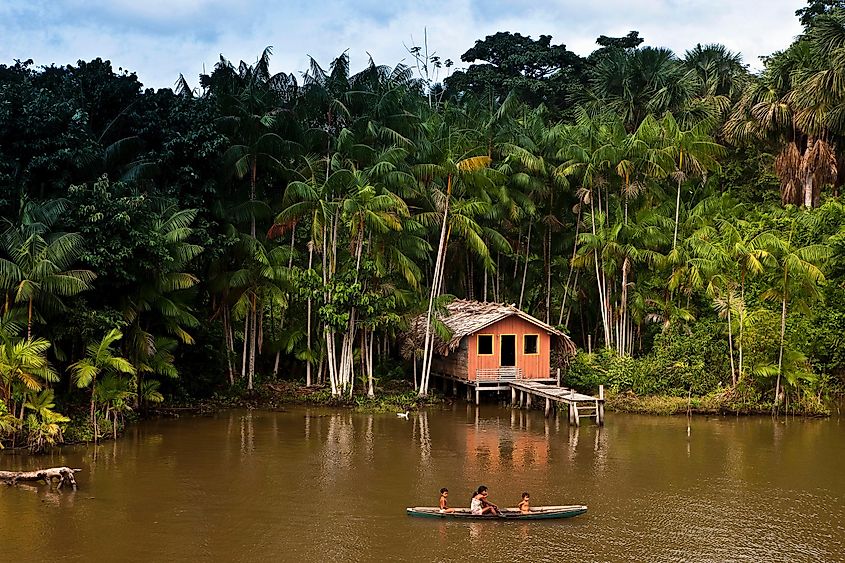
The Amazon Delta is also in the path of rising seawater. As a result, efforts are ongoing to help people adapt and protect their homes in light of this unavoidable risk. Communities known as ribeirinhos coexist with the delta’s ever-shifting landscapes. They rely on the river to get around and fish. The water also helps them with their agricultural efforts. They continue to forge a unique way of life, intertwining their daily activities with a gorgeous natural world.
We must preserve the breathtaking beauty and remarkable biodiversity of the Amazon Delta for future generations. It is one of the most ecologically diverse places on Earth, giving experts a real-time view of the intricacies of our planet’s ecosystems. It facilitates the transition between land and sea, freshwater and saltwater, and sustains several species found nowhere else in the world. The delta also plays a role in regulating climate, with its forests absorbing large amounts of carbon dioxide. Governments and official organizations continue to discuss ways and means of protecting the delta against external forces, and it is hoped that their strategies will successfully address the environmental and social issues the region faces.










